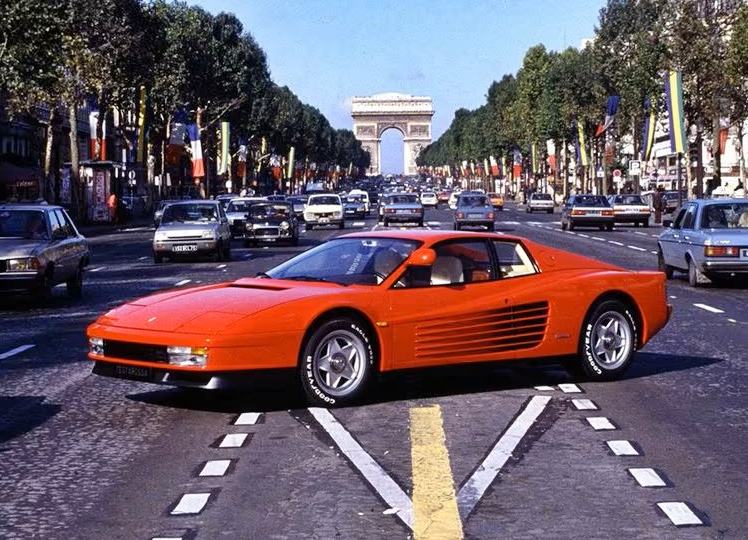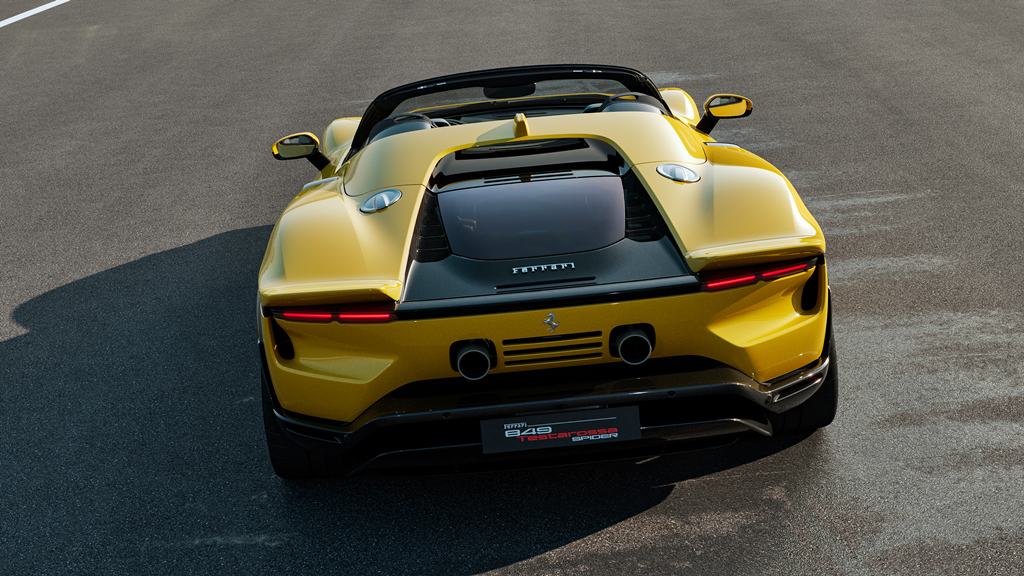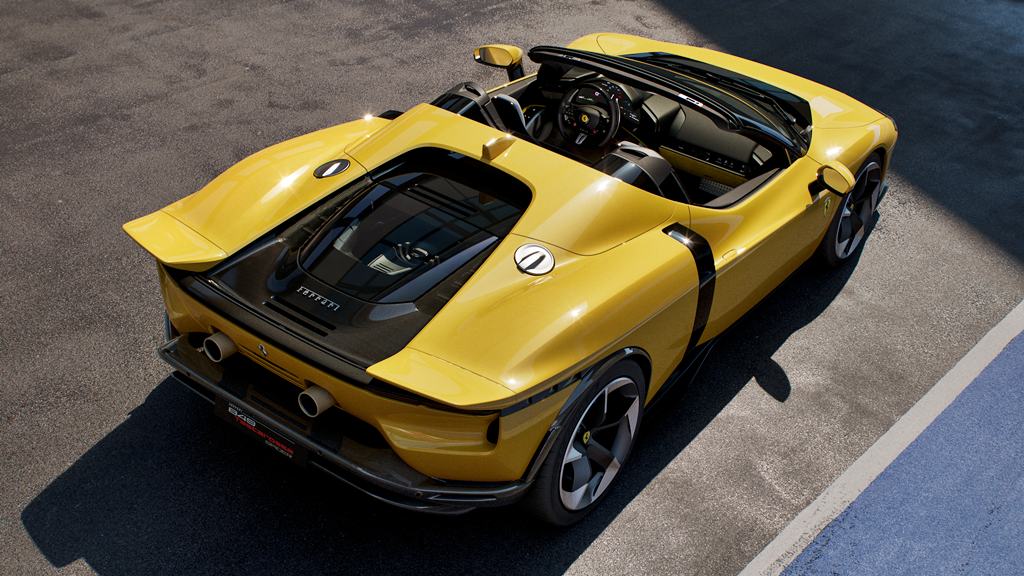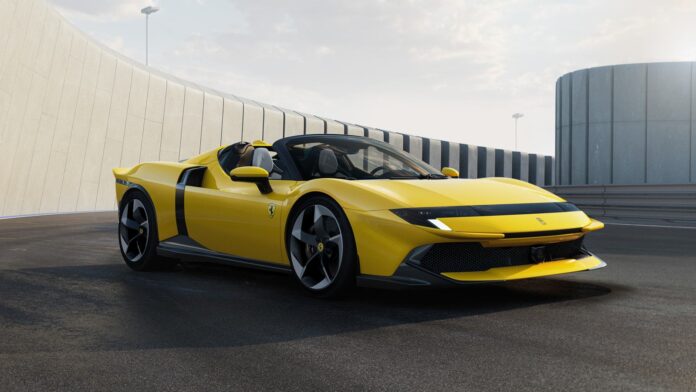Testa Rossa is a legendary name in Ferrari’s history, first used on the 500 TR in 1956 to describe the colour of the cam covers of some of Ferrari’s most extreme, high-performance and iconic racing engines. Later on, it would be the name for one of the marque’s most famous road-going models – the 1984 Testarossa (below).

Drawing on a 70-year heritage of some of the most iconic sportscars ever built, Ferrari has unveiled the 849 Testarossa Spider as successor to the SF90 Spider. Complementing the also new 849, the Testarossa Spider takes its place at the top of Ferrari’s open-top range.
Electrified powertrain
While not pursuing complete electrification, Ferrari nevertheless has developed advanced electrified powertrains and the Testarossa Spider uses a plug-in hybrid powertrain. It has 3 electric motors working with a mid-rear twin-turbo V8, the whole system delivering a total of 1,050 ps, 50 ps more than the SF90 Spider it replaces.

The V8 is from a family of engines that received multiple International Engine of the Year awards. The unit has been completely re-engineered to reach new performance peaks (up to 830 ps) and uses a new turbocharger which is, the largest ever for a Ferrari production car.
Coupe – and also spider
The new car is both a true coupe and a true spider, thanks to Ferrari’s retractable hard top (RHT), which allows the driver to open and close within 14 seconds, even while driving at speeds up to 45 km/h. To maximize comfort, an innovative new wind-catcher (positioned behind the seats) has been developed to minimize turbulence inside the cabin.
The two elements that most significantly distinguish the new Testarossa Spider are the rear tonneau cover bridge and the wind stop, the patented, integrated ducting in the rear bench behind the seats. The bridge, with the roof closed, correctly channels the airflow towards the rear engine cover and active spoiler.

The wind stop is a patented system that, in the open-roof configuration, captures the incoming airflow above the side window through air intakes integrated into the bench and releases it into the seat’s floorpan area via two small lower vents. Thanks to this system, the disturbance generated by the high-energy flow in the upper part of the cabin and tunnel is reduced, ensuring improved comfort for the occupants.
Enhanced dynamics
To enhance its dynamic qualities and the driver feedback at the limit, the Testarossa Spider is equipped (in addition to the latest generation brake-by-wire system) with Ferrari’s ABS Evo controller, which improves braking precision and consistency in all conditions, along with the new braking system.
The spring and damper set-up has been completely revised for improved behaviour at the limit of grip. Extensive component weight reduction has allowed the car to boast the best power-to-weight ratio ever for a range model, since the enormous performance increase has not resulted in any additional weight compared to the SF90 Spider.

Inspired by 1970s Sports Prototypes
From a styling point of view as well, the 849 Testarossa Spider marks a revolution in the concept of a Ferrari V8 mid-rear berlinetta: the inspiration taken from 1970s Sports Prototypes, together with sharp and geometric lines, creates a unique and timeless design.
The synergy between form and function has enabled impressive aerodynamic performance: the total downforce of 415 kgs at 250 km/h represents a 25 kg increase over the SF90 Spider as well as providing a 15% boost in cooling power for the powertrain and brakes.
The cockpit is even more enveloping and ergonomic than before. The central sail motif with the integrated gear-change gate, inspired by the F80, improves the positioning of components and makes them more accessible.

The new steering wheel, equipped with mechanical buttons (including the iconic engine start button), elevates the driving experience while maintaining the high functionality of the latest-generation Ferrari steering wheels. Finally, a new HMI system makes interaction with the car even simpler and more intuitive.
The seats are available in two versions: comfort, with a sculptural treatment of the upholstery and styling that matches the geometry of the cockpit, and a carbonfibre racing seat, with sporty side bolsters for ideal lateral containment.




